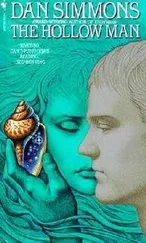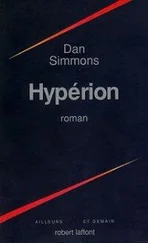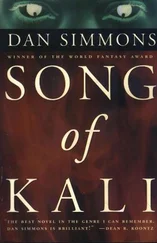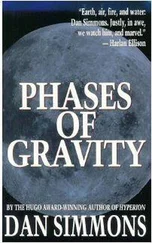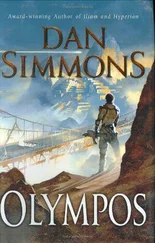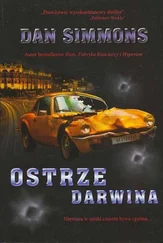Fire. Bison herds. Burning. Time.
The voice in his nagi spirit-ear is Rain’s, his great-granddaughter Constance’s, Limps-a-Lot’s, Robert’s, and the wisest of the Six Grandfathers’.
Paha Sapa is moved to tears he cannot shed, but he still does not understand.
The raven swoops, clears a grassy hilltop by only fifty feet, and Paha Sapa sees.
Buffalo. Bison. Filling the valley. Filling the hilltops to the north. The herd stretching off east and west and north for miles. Thousands of buffalo. Tens of thousands. Hundreds of thousands. More.
The raven banks west toward the river.
The mountains so far beyond to the west—seen only by the raven’s magical predator’s eye—are totally without snow now. Not even the peaks have a dash of white. The river is narrower, its level much lower, obviously not supplied by melting snow from those now-dry distant peaks. But the water that remains is clear and dark and looks clean enough to drink without worry; even in Paha Sapa’s day there were compelling reasons not to drink from a local stream.
The raven circles and Paha Sapa gasps—or makes an equivalent nagi spirit–sound to a gasp.
The wildlife here near the river is extensive. And large.
Besides the bison herd that stretches on to three of the horizons, there are running herds of small, tan horses. Not the same as the tiny horses he saw from 11,000 and more years ago, but similar. Very similar.
— Przewalski’s horses.
Paha Sapa has no idea who Mr. Przewalski is, but he likes his horses—tiny, tough, wild, black-maned, as alert as any wild prey. And he absolutely loves the sound of the sweet voice.
A line of camels comes out of the deciduous forest to drink.
— Bactrian camels from the Gobi Desert to stand in for the extinct Camelops hesternus —Western Camel—that evolved here and was so successful in the Pleistocene. But it’s amazing how similar the DNA is.
Paha Sapa has not the slightest clue as to what DNA is or was, but he could listen to this voice forever. He wants it to never stop.
— There were four species of Proboscidea here during the Pleistocene, Paha Sapa —Mammuthus columbi, the prevalent Columbian mammoth; Mammut americanum, the American mastodon; Mammuthus exillis, the Dwarf mammoth—not quite so common—and your and my old friend Mammuthus primigenius, the Woolly mammoth we saw reconstructed at the Chicago World’s Fair.
Paha Sapa weeps silently at that.
— After much testing, we decided that the genotype of the endangered Asian elephant was the closest to our missing friends. And it adapts well to the warming climate across the Great Plains. But there are several thousand African elephants here as well—if only to save them from the environmental disasters in Africa over the past thirty years.
Elephants? Paha Sapa thinks just as a group of them comes out of the high, blowing grass of the low hills and lumbers down toward the river. One of the smallest wants to run down ahead of the herd, but the mother—or at least one of the females—restrains the youngster with the gentle curve of her trunk.
A cluster of drinking Bactrian camels and groups of pronghorn antelope scatter at the approach of the elephants. But they scatter along the east side of the river.
On the west side, a large pride of lions crouch to drink.
— From southern Africa. The last of their kind. But they are doing wonderfully well here. The prides in the PMRP’s eastern tracts beyond the Missouri River number in the thousands now. For some reason it makes it a more popular area. There are only four hundred trekker permits given out for that area each year and we get more than a million requests.
Trekker? Paha Sapa mentally repeats to himself.
A jaguar has just emerged from the tall grasses beyond the river, then effortlessly disappears again. Paha Sapa wonders if he actually saw it. Something like a very large sloth is watching the jaguar from the trees. The sloth’s curved claws are long and black. The plants along the river—whose banks are no longer tumbledown from cattle—grow in almost shocking variety. The grass here looks like a manicured lawn in places.
— One of the side effects of diversified grazing.
Hundreds of yards upstream, a bald eagle is circling, looking for carrion or fish. Paha Sapa’s raven does not react as if threatened this time. Paha Sapa thinks— The one constant. There are always eagles.
But the raven rises again anyway, turning southeast. The tour must be over. Paha Sapa wants to shout; he wants to weep; but most of all, he wants to hear the chorus of beloved voices once again. But he knows his tour is over.
— It’s not over yet, Paha Sapa. You haven’t even seen the best part yet.
A minute later he glimpses them through the raven’s incredible eyes. A tiny scattering of white marks there, miles away and miles below in that river valley. Then a tiny scattering of white triangles there, miles away and miles below in the opposite direction, along a tallgrass prairie ridgeline.
The raven banks right and swoops toward the ridgeline.
Dear All , thinks Paha Sapa. Dear Wakan Tanka . Let this death-dream be real .
Out in the valley this side of the white triangles, boys watch over a small herd of horses. These are the largest versions of the strange, wild horses Paha Sapa has just seen running wild across the prairie. They are pony sized but not docile. The boys here obviously have to be on their toes to keep these small herds of captured horses captured.
The raven continues rising toward the ridgeline.
It is a small tiyospaye , no more than twenty lodges, but the tipis are tall and well made, the tipi poles made of stripped lodgepole pines of just the right length—like the fingers of a hand—the first three poles making a star and the star shape making a vortex of powerful light for those who will live within its welcoming power. If arranged correctly, the full ten poles of each tipi represent the universe’s deepest morality—the oho¸ki˙cilaþi of mutal respect toward all things—and the ten oho¸ki˙cilaþ poles are arranged correctly and covered with the clean, bright hides of buffalo with the hair scraped off properly. The lodges are arranged in circles as commanded to the Natural Free Human Beings by Bird Woman and by the Six Grandfathers, so that people’s homes will repeat the sacred-hoop pattern of the universe itself.
There are people moving around the tiyospaye as the raven lands atop a tipi pole, and Paha Sapa sees that the men and women are wearing handmade clothing similar to that he wore as a boy… similar, but not a museum re-creation. Many of the skins and hides are the same, antelope and deer and buffalo, all scraped smooth, softened by women’s chewing, but there are other textures and colors he cannot identify. He sees a war shield propped against a tipi and realizes with a shock that the hide of the shield is made of elephant skin.
An older man walks by, someone important, Paha Sapa guesses based on the beadwork on his moccasins and the perfection of his fringed tunic and trousers, but on this warrior’s shoulders and head are the hide, mane, and roaring jaw of a lion.
Paha Sapa would blink if he had eyelids.
These are Natural Free Human Beings. Paha Sapa can hear through his raven’s ultrasharp ears as the people speak in a soft, oddly accented Lakota. Then Paha Sapa realizes what the Lakota accent reminds him of—Robert’s slight accent when he learned the language from his father. Perhaps some of these men and women were English speakers before they adopted Lakota. Or perhaps the dialect has just changed over time, as it does in every language.
Читать дальше


